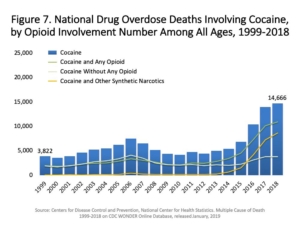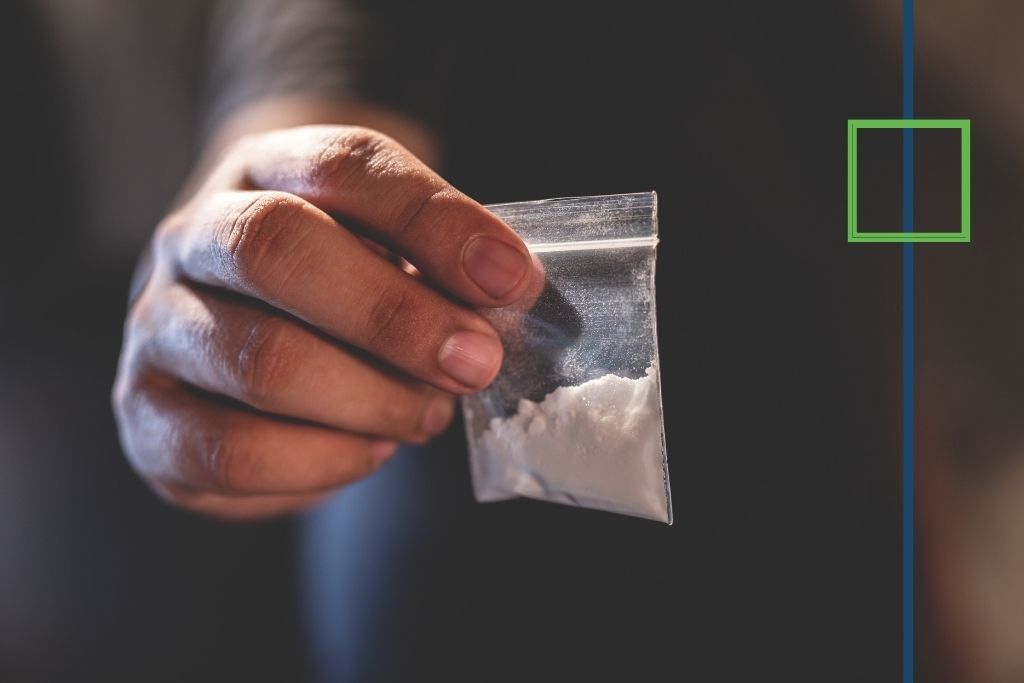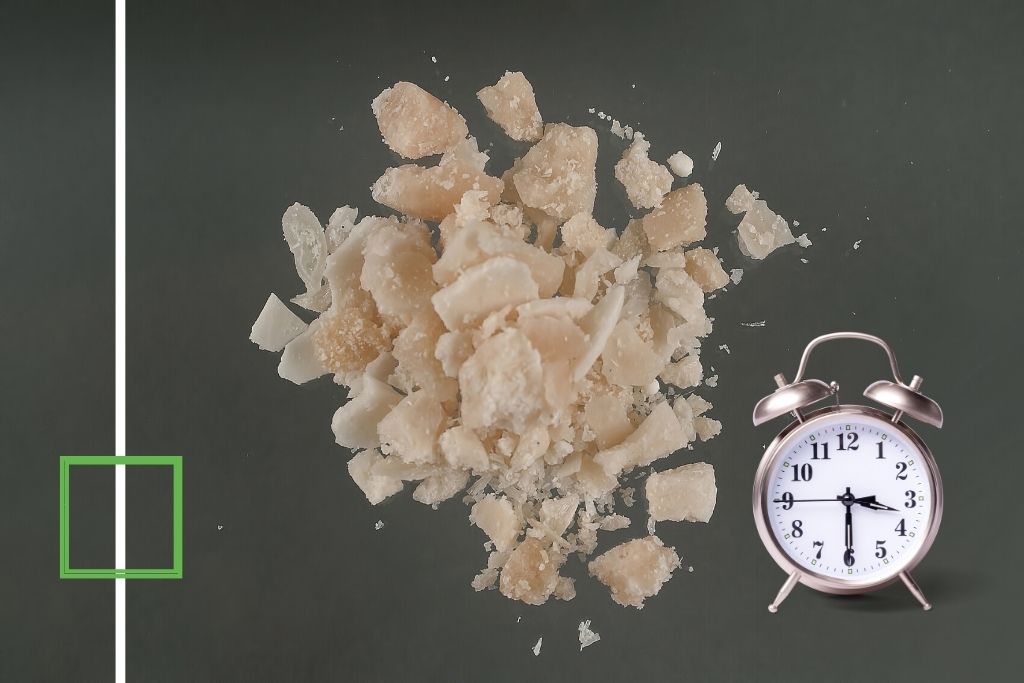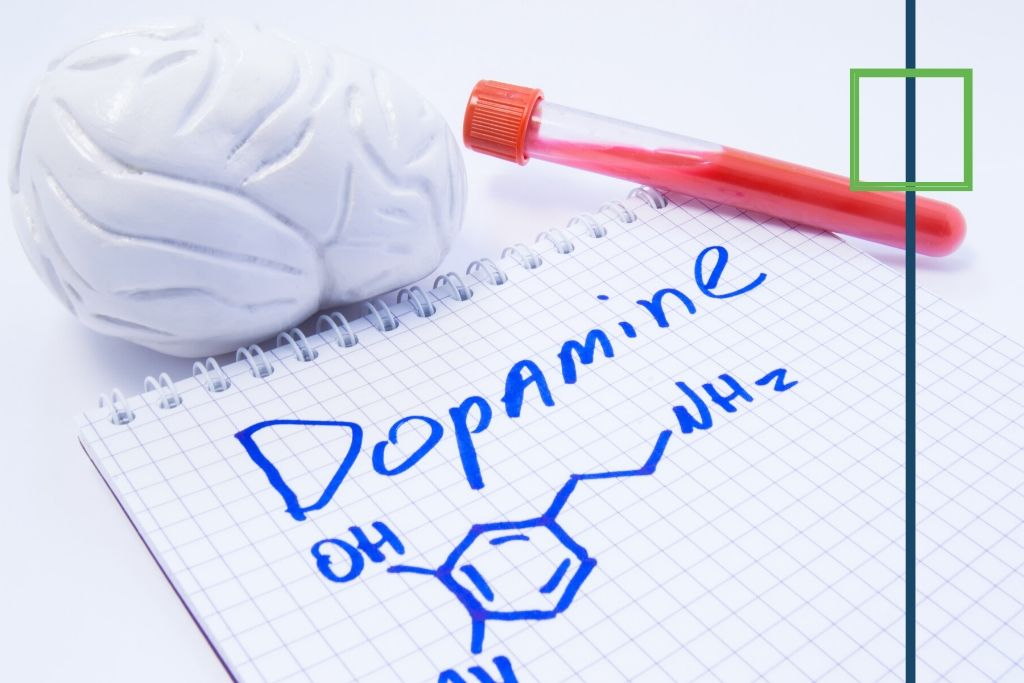It is estimated that over 1.5 million people in the United States use cocaine. This makes the substance one of the most widely abused illegal substances in the country. Along with it is the destructive potential leading to a lifetime of addiction. Even though cocaine has some medicinal purposes, it is an illegal drug in most countries because of its addictive nature and likelihood of being abused.
Cocaine is most commonly distributed in powder form but can also be found as a liquid or as a crystal. Just as cocaine has multiple physical states, there are multiple ways that it can be used. The route of cocaine administration is dependent on the form. The first and very common form is a finely crushed powder. Powdered cocaine can be snorted, eaten, rubbed into gums, smoked, or injected intravenously. Crack cocaine is a crystal rock form of cocaine that is often cut with baking soda and is overall a lower purity form of the substance. Both of these forms of cocaine carry extreme risks. In fact, cocaine has contributed to nearly 14,000 overdose deaths in 2017 alone. For individuals who use cocaine on a regular basis, detox will likely be the first step recommended as a part of the treatment plan.
Understanding Cocaine Use and Abuse
When a user continues to use cocaine for a long time, there are chances that the drug will impair their nervous system and brain functions, inhibiting memory, pleasure, as well as decision making. Once these brain functions begin to fail, it becomes more difficult for the process of cocaine detox because the individual may become incapable of making sound decisions.
For some users, cocaine use can quickly create a strong addiction to the drug making it very hard to simply experiment with. In fact, a study in the Journal of Psychopharmacology indicated that cocaine addicts would choose the drug over food. This strong addiction often makes it difficult to quit without help as those addicted find themselves using it despite the apparent adverse side effects.
Cocaine is known to react quickly with the body system to produce a euphoria that may last for about 15 minutes to one hour. These effects depend on the mode of ingestion. When cocaine is smoked the impact can be felt after about 30 minutes while an intravenous injection can take only about five minutes.
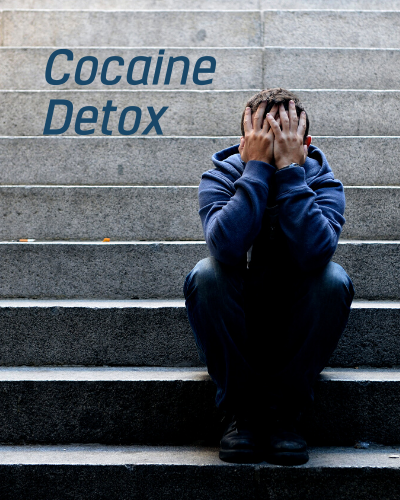
Why Is Cocaine So Addictive?
Dopamine: Use of cocaine stimulates the production of dopamine, a chemical in the human brain responsible for pleasure. Excessive use of cocaine will result in the brain releasing more of this chemical thus giving the individual a sense of euphoria. Too much exposure to this product will eventually make one want to experience that feeling all over, hence the brain will prompt the need for the trigger.
Corticosterone hormone: The stress hormone in the body makes the body vulnerable to addiction. Studies have found out that when an individual who is stressed up uses cocaine, the high levels of stress hormone in the body will create a severe addiction to the drug. This is likely because of the feeling of relaxation that cocaine will bring to the brain function making one want more of that feeling instead of being bogged down by stress.
Prefrontal Cortex: This is the control center of the brain responsible for decision-making and self-control. Cocaine abuse inhibits the proper functioning of the prefrontal cortex making it hard for an individual to understand the effects of continued cocaine use.
Signs of Cocaine Addiction
Addiction, dependence, and abuse of cocaine is unfortunately relatively common across the United States. A national survey conducted in 2014 showed that close to 1 million adults met the criteria for cocaine abuse or dependence. Although the DSM-V changed the way substance use disorders are categorized, that does not change that these 2014 numbers still show how significant the prevalence of cocaine use is.
Due to the stimulant effects of cocaine and short half-life, a large number of users habitually consume cocaine. Once consumed, snorted, or injected, the effects are felt almost immediately. There is an initial high that is supremely euphoric and sparks a bought of energy. The person’s actions and words may speed up and seem almost frantic to an onlooker. Their temperature will rise and they may seem a little sweaty, anxious, and possibly non-sensible to others. These effects may only last for about 15 minutes to an hour. The short length, but great euphoria of the high is often why habitual use develops. As the effects start to wear off, they take another bump. Someone who is relying heavily on cocaine for their energy might take frequent trips to the bathroom, they may experience mood swings, and they may have a lack of interest in eating or sleeping.
Common Cocaine Side Effects
- Weight loss
- Mood swings
- Increase in heart rate
- Enlarged pupils
- Paranoia
- Nosebleeds, inflamed nostrils, or nasal congestion
- Nervousness, restlessness, and inability to concentrate
- Increased susceptibility to viruses and bacteria due to a reduced immune response
- Delusions and hallucinations
Long-Term Effects of Cocaine Abuse
Continued cocaine use can lead to the following side effects:
- Anxiety – People who continually use cocaine will often remain anxious most of the time. The simulative nature of the drug causes this anxiety.
- Cocaine users may experience nose bleeding – Users who snort cocaine may experience nose bleeds as their nasal cavities are damaged from restricted blood flow. Long-term users may develop ‘holes’ in their septum requiring surgery.
- Extreme tiredness and reduced activity – Cocaine abuse creates franticly paced highs, but also hard crashes. During the periods after a high, the user will often experience low energy levels making the users less productive especially as they continue to use more.
- Heart attack – Continued use of cocaine can result in damage to cardiac muscles, inflammation of the muscles, and even rupture the aorta. The results of this are heart palpitations, extreme stress on the cardiovascular system, and eventually death. In some cases, even without long-term addiction, overdoses of cocaine can experience a fatal heart attack..
- Increases the risk of stroke and brain damage – Since dopamine, the hormone produced as a result of cocaine, interferes with typical cardiovascular functions, the risk of users experiencing a stroke or brain damage is increased.
- Kidney damage – As one continues to use cocaine, the kidneys become inflamed and, from the stress of blood filtration, may begin to fail.
- Contracting infectious diseases – Cocaine abusers have an increased risk of developing HIV and Hepatitis. It is not uncommon to find cocaine addicts sharing one needle to inject the drug. Binges of cocaine and the lows of addiction often lower hygiene standards to a point where contracting a disease is more common.
- Impairment in logic, critical thinking, and attention span – As one continues to use cocaine, cognitive functions and self-preservation are impaired resulting in the inability to make sound decisions. In the throes of addiction, many cannot think critically and have a shorter attention span.
- Tooth decay – Prolonged use of cocaine will result in tooth decay not just due to the chemical compounds found in the drug, but because hygiene has taken a backseat to acquire the drug. You will most likely discover that people who use the drug for a more extended period have issues with their teeth.
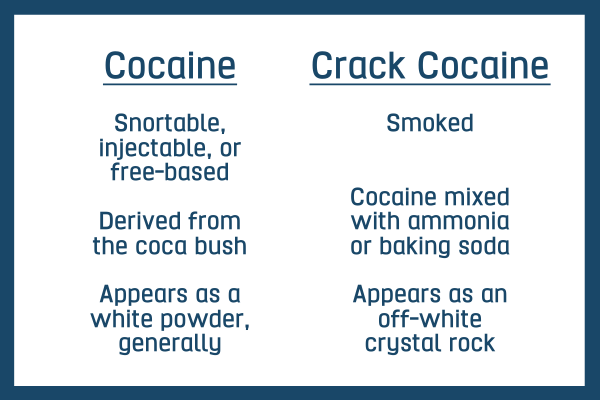
What is Crack Cocaine?
Crack Cocaine, also known as crack, rock candy, base, ball, rocks, nuggets, grit, hail, dice, sleet, or tornado, is a less processed and therefore, less pure form of cocaine. The appearance of crack rocks is that of a dull crystal. These crystals are heated and the vapors inhaled and can be done using a pipe or in a cigarette. Crack gets its namesake from the sound it makes when heated.
Although this is a cruder form of cocaine, crack acts much faster but with a shorter-lasting high. Typically the effects of smoking crack cocaine are on the shorter end and only last about 15 minutes. The short life of the high also brings more intense frequent cravings. Additionally, because crack is often cut with fillers like baking soda or ammonia, there are also often unintended side effects. Drug peddlers may add these fillers to make it seem like their customer is getting more for their money, but really it is just adding more risk to the user and more profit for the seller.
Cocaine and crack cocaine are virtually identical in chemical and pharmacological makeup. As such, both cause the same side effects and there is no difference between cocaine addiction or crack addiction or how long crack cocaine stays in your system.
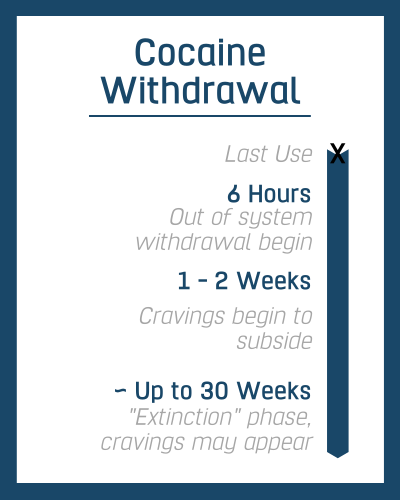
The Cocaine Withdrawal Process
The severe cravings and mental dependency that cocaine users develop mean that discontinuing use requires a detox period. Depending on the length of time using and the amount used, cocaine detox may bring on an array of physical and physiological withdrawal symptoms. The cocaine detox process can take anywhere from 12 hours to 4 or more days. Most users will experience a level of decreased energy as well as increased anxiety and irritability. Unlike substances such as alcohol and heroin, withdrawal symptoms such as vomiting and tremors are not common. However, a combination of alcohol and cocaine abuse is common and can trigger these more severe symptoms.
More common cocaine withdrawal symptoms include:
- Fatigue
- Lack of pleasure
- Irritability and anxiety
- Suspicion or paranoia
- Agitation
- Trouble eating or sleeping
The Importance of Drug Detox for Cocaine Addiction
Long-term, continued cocaine use quickly leads to late-stage addiction. In this stage, the risks the user takes on are significant and critical to be aware of. The most severe of the possible risks is that of overdose and death. According to data collected by the CDC, the number of cocaine overdose-related deaths rose between 2015 and 2018 from 12,676 to 14,666 deaths across the country. Additionally, co-current cocaine and opioid drug use are becoming an increasing concern. A staggering rise has been seen in the past 5 years among drug overdose deaths involving cocaine and opioids or other synthetic narcotics. In 1999, the overall number of overdoses involving cocaine was 3,822 and in 2018 this number hit 14,666. The majority of this rise was seen in just the past couple of years.
No different from addiction to other addictive substances, the effects can be life-altering. This includes job loss, relationship strains, financial decline, health problems, and mental instability. Increased health problems may include stroke, seizure, heart disease, cardiovascular and respiratory complications. Cocaine use has also been linked to cognitive disorders such as memory loss and decreased attention span. Users who share paraphernalia, especially needles, are at increased risk of contracting communicable diseases like HIV and Hepatitis.
Detox promotes healing in a safe, comfortable environment and provides resources for withdrawal that minimize negative symptoms. With a staff of trained practitioners and caretakers, Level Up Lake Worth provides the ability detox under the watchful eye of professionals. We work to maximize comfort, offering over-the-counter and prescription medications as needed, psychological care, and personal support to encourage abstinence from cocaine and other drugs, both today and for years to come.
Cocaine Addiction Treatment
Following the completion of a cocaine detox program, there are a number of different treatment options to help individuals who have been struggling with addiction. Care can be provided on an inpatient or outpatient basis, and at various levels of care. The level of care that your addiction treatment team recommends to you will be determined based on a number of factors that include but are not limited to your current progress with recovery, your history with addiction and recovery, your motivation, and your home environment. The levels of care for cocaine addiction treatment include:
- Residential Cocaine Addiction Rehab
- Intensive Outpatient Program (IOP)
- Partial Hospitalization Program (PHP)
- Outpatient Treatment & Aftercare
For those addicted to cocaine, help is here. Please contact Level Up Lake Worth today to learn more about how to overcome addiction to cocaine with our detox & addiction treatment program.
Statistics on Cocaine Use
Here are some statistics about cocaine use:
- Adults between the ages of 18-25 abuse cocaine more than any other age group, though people of all ages engage in cocaine abuse.
- In the year 2008, the national drug abuse warning network reported that in about 40% of the emergency cases are as a result of cocaine abuse.
- In 2014, there were an estimated 1.5 million cocaine users aged 12 or older (0.6 percent of the population).
- 2015 National Survey on Drug Use and Health found out that about 5 million people were reported to have used cocaine at one point in their lives. The study also indicates that approximately 1.75 times more men than women abused cocaine during the year.
- In 2014, according to the NSDUH, an estimated 913,000 Americans met the Diagnostic and Statistical Manual of Mental Disorders criteria for dependence or abuse of cocaine.
Cocaine Detox: The First Step of Recovery
Cocaine addiction, like many addictions, can be overwhelming to face on one’s own. It’s important that an abuser finds the right treatment for addiction that treats their addiction individually and safely. At Level Up Lake Worth, we work hard to create an environment and uphold standards of care for the success of each and every client. Contact us to get started at our cocaine addiction treatment program. Please contact Level Up Lake Worth today to learn more about how to overcome addiction to cocaine with our detox & addiction treatment program.
